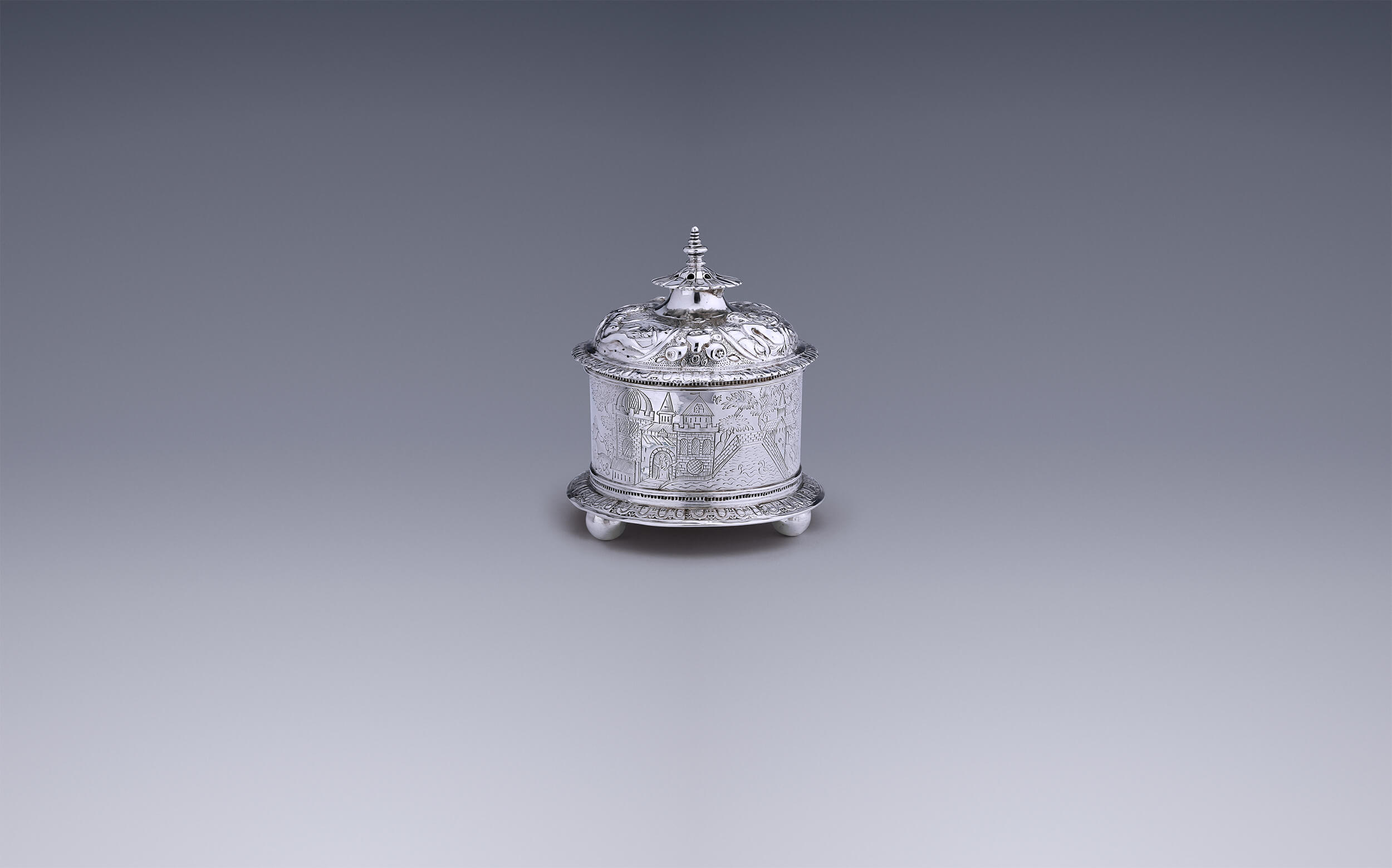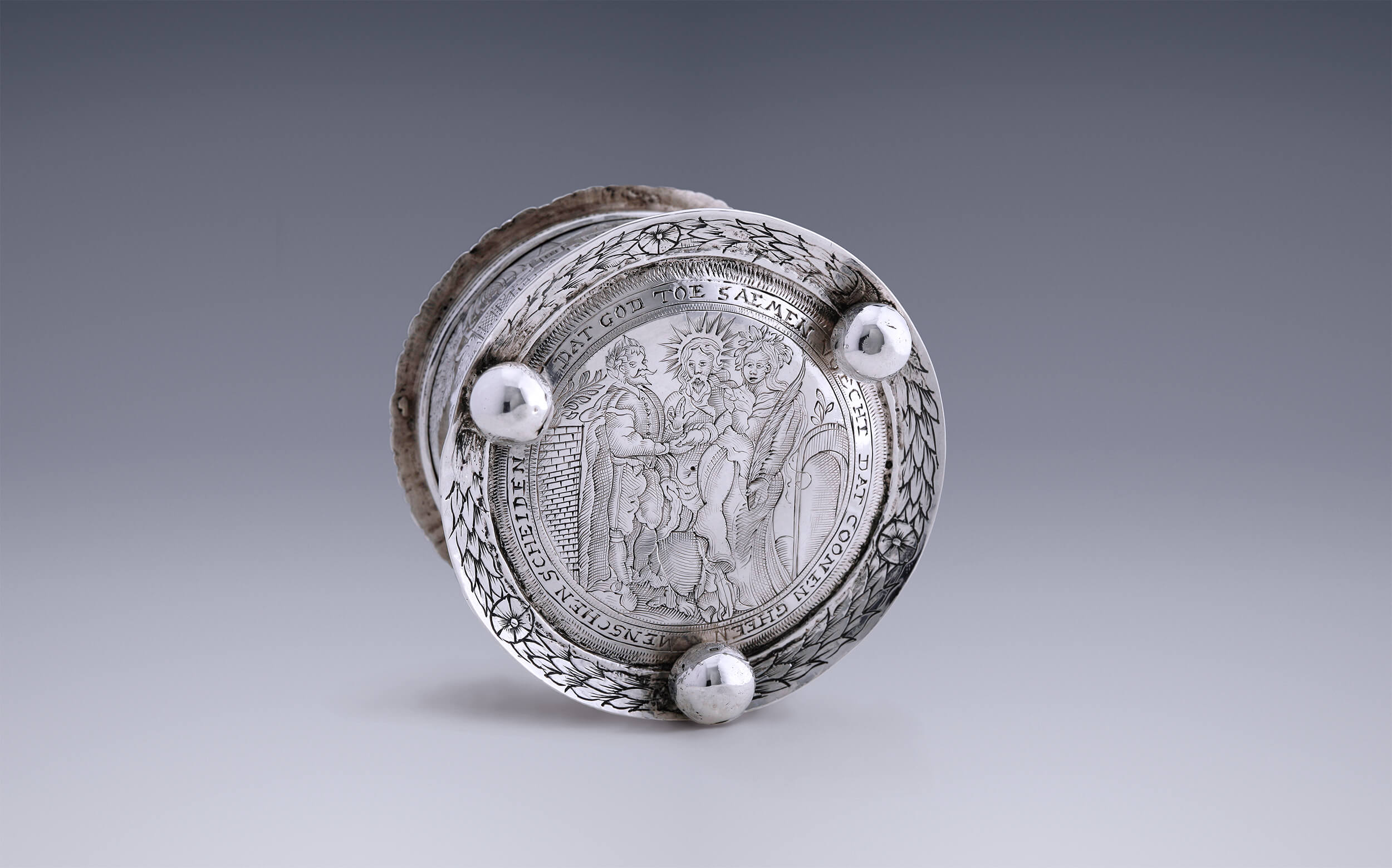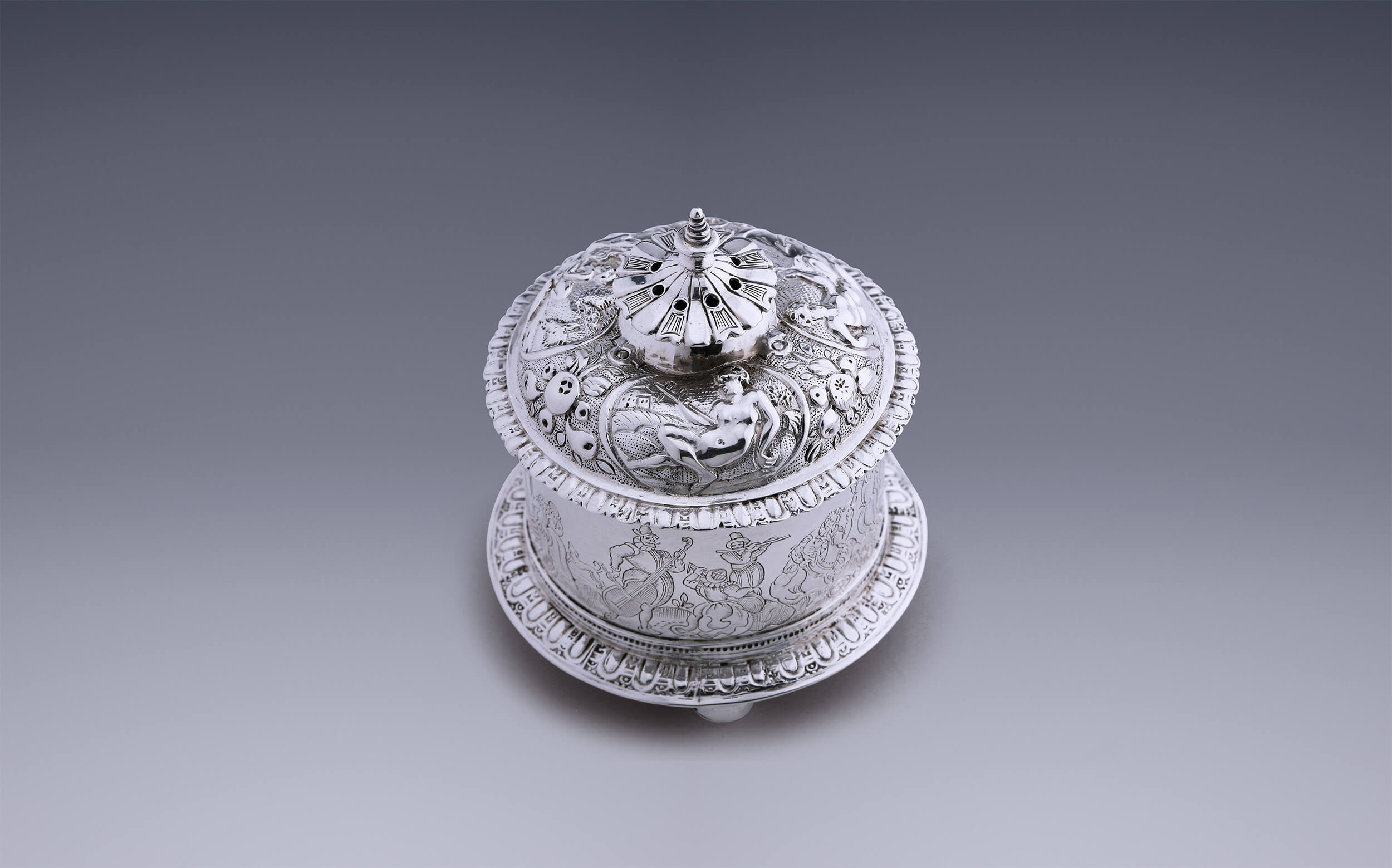A marriage box or ‘knot box’ was a valuable gift from a man to the woman he wanted to marry. This round silver Frisian knot box stands on three ball feet. The box was made around 1640 by Jan Melchers Oosterveld (attr.) and is engraved all round with a design relating to marriage. It is a landscape with a river spanned by a bridge, a symbol of the transition from one stage of life to the next. On the left bank there is a castle with a woman standing in the doorway, watching the betrothed couple. On the right bank there is a church. The couple walk towards the church door, accompanied by a dog—like the swan in the water, a symbol of fidelity. Alongside we see the celebration of the marriage. Musicians play to the newly-weds. The groom reclines in the bride’s arms while his tazza is filled with wine.
A Round Marriage Box
On the domed cover there are three oval cartouches containing symbols of faith (a woman with a cross), hope (a woman with an anchor) and charity (a woman with two children). The base has a beautifully executed engraving of Christ blessing a married couple, surrounded by the inscription: Dat God toe saemen voecht dat coonen gheen menschen scheiden (What God has joined together, let no man put asunder). Around it is an engraved laurelwreath, a symbol of victory and immortality.
Knot Box
The term knot casket or knot box derives from an old Frisian custom for proposing marriage. A young man would tie silver coins loosely in an embroidered linen cloth. Carrying this ‘knotting cloth’, he would walk past the young lady who had caught his eye. The clinking of the coins in the cloth would give the woman some idea as to whether the man had the means to look after her. If she agreed to the match, she would tighten the knot. If she did not, the man could go on his way without losing too much face. In wealthy and aristocratic families the knotting cloth would be replaced by a miniature silver casket or box—the knot box.
As the box was proffered, the young man would recite this little verse:
Wotte? sa wotte
Sa heste de knotte
Wost it net dwaen
Den kinst my de knotte werjaen
Will you? If you will
Then keep the knotting cloth
If you will not
You must give the knot back to me
This gave the lady in question far more say in the matter than had previously been customary. For centuries a woman was the property of a man throughout her life, belonging first to her father and later to her husband. Old matrimonial laws record how the price for the transfer of ownership of a young woman could be arrived at. Gradually, however, women were given more say in the choice of their marriage partner, even though marriages were still arranged. What had been a selling price became the bride’s dowry.
Most knot boxes are rectangular and take the form of a miniature wedding casket with a domed lid. Round knot boxes are considerably rarer. A number of coins could be stacked in this round knot box. The little box was valuable in its own right, as it is made of silver—like the coins that would be placed in it. The round shape, the chased designs and the exceptionally fine engraving make this a piece of outstanding quality.
Jan Melchers Oostervelt
Round knot boxes are seldom hallmarked, and this one is no exception. The combination of a continuous engraved design with chasing is characteristic of Jan Melchers Oostervelt, to whom this piece is attributed.
Jan Melchers Oostervelt was born in Harlingen around 1583. He became a master silversmith when he was twenty-eight, and died at the age of eighty-three in January 1667. Although we do not know who taught him his trade, Oostervelt himself trained eighteen apprentices between 1612 and 1663. He married for the first time in 1611, the year he became a master silversmith, and then three more times. Between 1635 and 1667 he held various official posts in Leeuwarden.
Provenance
A.O. van Kerkwijk Collection, The Hague (director of the Numismatic Collection in The Hague)
Sale Amsterdam 1957, lot no. 13
Sale Amsterdam 2010
Collection A. Aardewerk
Private collection The Netherlands
Literature
Catalogue Friesch zilver, 1927, cat. no. 279
Exh. cat. Leiden, 1935, no. 79
N. Ottema Oudheidkundig jaarboek VII, p. 79, fig. 7
Frederiks, Dutch Silver vol. III, plate 276, cat. no. 342
E. Voet Jr, Merken van Friese Goud en Zilversmeden, 1974, p. 163
Catalogue De zilveren eeuw, 2000, p. 78
This site is protected by reCAPTCHA and the Google Privacy Policy and Terms of Service apply.


